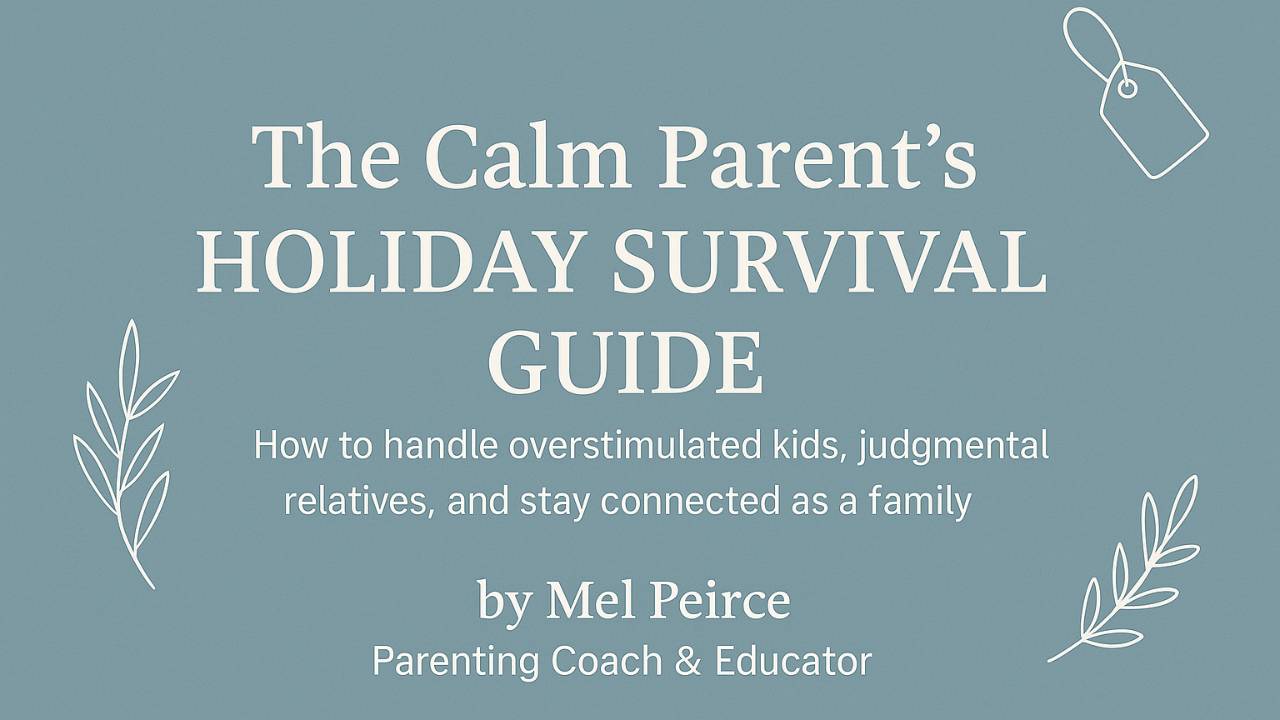Move from Anxiety to Calm and Effective Parenting
Apr 05, 2022
Do you find that as a parent you go from zero to sixty easily, and find yourself snapping or yelling more than you would like? Emotions are running high as a collective, and our nervous systems are already on edge. Many parents are feeling like they’re hanging on by a thread, and any proverbial straw can break the camel’s back these days.
When I first start working with clients, I ask them to list the top three emotions they feel most often. As of late, the top three I hear are typically Anxiety, Overwhelm and Frustration in varying orders. Can you relate?
Knowing that our kids learn from watching us, how do we stay calm when we’re barely hanging on? Yes, we want to model good emotional regulation for our kids, but how do you move from anxious and frustrated parenting to being calm and effective? That’s the million-dollar question that I’m going to answer, and to do that we’re going to break it down step by step.
Imagine that you have a child that is struggling with anxiety at a level where they are locking themselves in the bathroom to avoid going to school — you are likely to feel anxious too.
When I asked my clients what thoughts they were having when their children were anxious, it’s usually some version of I need to fix this, I don’t know what to do, or even I did this to them (if the parent struggles with anxiety themselves). Have you had any of these thoughts?
I invite you to pause for a moment and consider that if you are thinking I need to fix this, I don’t know what to do, or I did this to them — it’s understandable and makes sense that those thoughts would make you feel anxious.
But think about how you parent when you are feeling anxious? When I ask clients what they do when they are anxious, here is what they tell me: They cry, they’re not nice to their family, they start worrying about everything else that could go wrong too, they spiral, and they’re completely stuck.
And here’s what they’re not doing:
They are not calm, they don’t listen, they can’t think clearly, and they can’t parent effectively to help their child. Let me make this simple — When you are stuck in anxiety, frustration or overwhelm, you can’t help your anxious, frustrated or overwhelmed kids.
However, you likely also can’t move directly from being anxious or frustrated to feeling okay about the situation. That’s too far of an emotional leap. So I would like to introduce you to space in between, the land of neutral. Getting to neutral helps you take the emotional charge out of the situation, so you are not caught up and reacting from your emotions.
When you’re anxious or frustrated you tend to be stuck worrying or unconsciously focused on how the situation relates to you. Look at how often “I” comes up in the common thoughts: I need to fix this, I don’t know what to do, or I did this to them. Getting to neutral helps you stop spiraling, and stay focused on how you can best help your child. Neutral allows you to keep your focus on your kids so you can best support them.
Victor Frankl said “Between stimulus and response there is a space. In that space is our power to choose our response. In our response lies our growth and our freedom.” Consider that in between what your child does or experiences and your reaction or response, is the land of neutral, and getting to neutral can be as easy as ABC.
In getting to neutral, you start with adding space (A) between what your child has done, said or is experiencing. The more space you add, the more power you will have over how you respond. In that space, take a couple of really deep breaths (B). Breathing actually helps your body regulate your autonomic nervous system, which means it helps you regulate your emotions and reactions. By breathing deeply, you are moving away from the heightened emotions so you can get to neutral.
Once you have completed at least one deep breath, work on choosing a new thought (C). What your child has said, done or experienced has already happened. You have no control over what your child has done, said, or is experiencing — and you can’t change it. What you can change is how you respond, how you support them, and how you help them navigate through it.
Knowing this, I invite you to consider what thought will help you show up more powerfully. I work on all sorts of different thoughts for different situations with my clients, but for now I’m going to offer you the thought: It is what it is, I can’t change what’s happened. How do I best move forward and support my child from here? That thought might work, but if it doesn’t resonate I recommend that you play around with different thoughts to see what works best for you.
You want to choose a thought that helps you get to neutral, because once you’re in neutral you’re able to tap into the power of your brain to come up with the best possible solution knowing that your brain will work to answer any question you ask. You’re asking your best self to show up and parent, which is how you parent most effectively. Getting to neutral helps you parent most effectively, and it’s as easy as ABC — Add more space, Breathe, and Choose a new thought.
I honestly believe that learning to get to neutral can help every single parent, and I have just shared the first step with you. I have developed a whole program filled with tools and strategies to help parents learn to Parent From Neutral so they can stay calm and effective when they need to most. Registration opens on April 28th and spots are limited. The parents on the waitlist will be notified first. So if you want to learn more about it and get notified as soon as registration opens I recommend getting on the waitlist here.
Kids learn from watching us, and I believe that the best lesson we can teach them is how to stay calm and effective in emotionally charged situations — and we do that by modeling it ourselves. Studies have proven that impulse control is the single biggest predictor of success in life. The sooner we teach these skills to children, the more we help build the resilience and emotional health of the next generation. I hope you’ll join me.
Join the Confident Parenting Community.
Receive the latest tips and tools from the Confident Parenting Toolbox to support your kids
(and yourself!) with today's challenges so your whole family can thrive.
We hate SPAM. We will never sell your information, for any reason.


